When you plan your trip to Madrid, Museo del Prado must be a essential visit, for which you must reserve in your agenda the time necessary to visit at least the most outstanding works of the great painters that this art gallery houses.
While not everyone is a big fan of painting, even if only visit Madrid for a weekend You should reserve at least two hours to enjoy the best masterpieces of painting that are displayed in the Museo del Prado.
At the outset you should know that the Meadow Museum is considered as the best art gallery in the world.
All the information in detail
Prado Museum, the best art gallery in the world
When you visit it, you will see that it is not a so-called museum of encyclopedic styleor, for example, the Paris Louvre, with representation of all schools and pictorial periods.
How many paintings does the Prado Museum have?
While the Prado Museum collection It has about 7.600 paintings and about 1.000 sculptures, only slightly less than 1.000 works are exhibited in its rooms, most of which belonged to the Royal Collections of the Spanish dynasties.
Yes, the Museo del Prado gathers the best collection of Spanish painting that exists, and a great representation of Flemish and Italian painting.
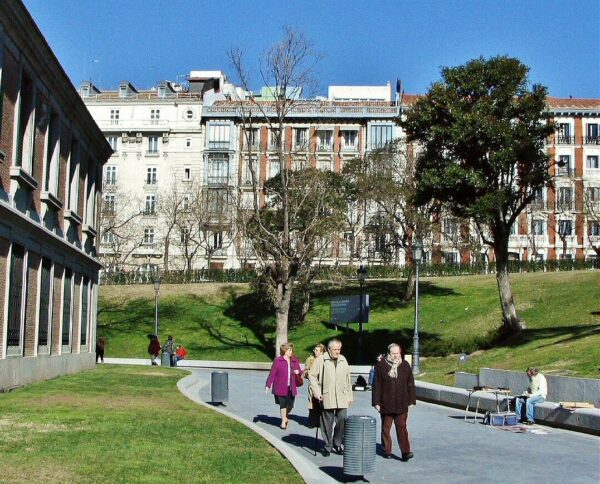
The result for the museum visitor is that, compared to other large painting museums, you will not find an endless and exhausting collection of paintings from all periods.
On the contrary, you will enjoy a great exhibition of great masterpieces of painting from among the XNUMXth and XNUMXth centuries, among which is shown the most sublime of Velázquez and Goya.
History of the Prado Museum
The origin of Prado museum in Madrid dates back to year 1785 when the king Carlos III commissioned the architect Juan Villanueva the construction of a building to be Natural Sciences Cabinet.
This building of neoclassical It became the culmination of the architectural work of Villanueva, although its construction was prolonged over time, at the same time that the destiny of the building changed.
Finally, in November 1819, already during the reign of Ferdinand VII, it was inaugurated Royal Museum of Paintings and Sculptures.
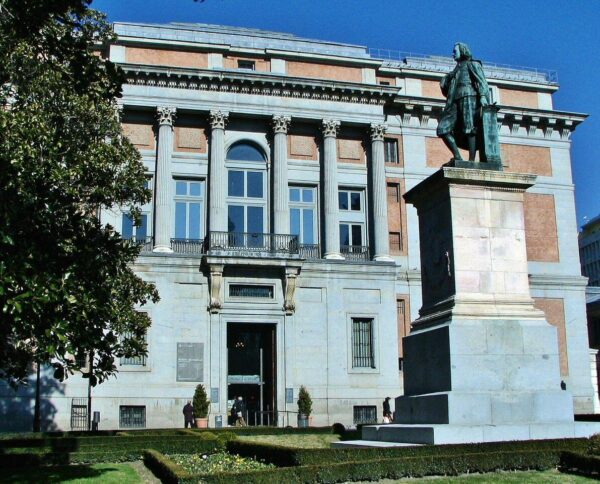
In this new institution the Royal Collections exclusively of Spanish painting, with the exhibition of 311 paintings, although the museum collections already had 1.500 works.
It was soon renamed National Museum of Painting and Sculpture, and subsequently Prado Museum, which is its current name.
During its history, the Prado Museum collection Madrid has been expanded, especially with the incorporation in 1872 of the works of the missing Trinity Museum,
This missing museum housed the works collected after the Disentailment of the assets of church, religious and noble orders.
More recently, in 1970, the Prado Museum collected part of the missing person's funds Museum of Modern Art, those corresponding to the 19th century, with works by madrazo, Rosales o Sorolla, while the works of the 20th century went on to enrich the collection of the nearby Reina Sofia Museum.
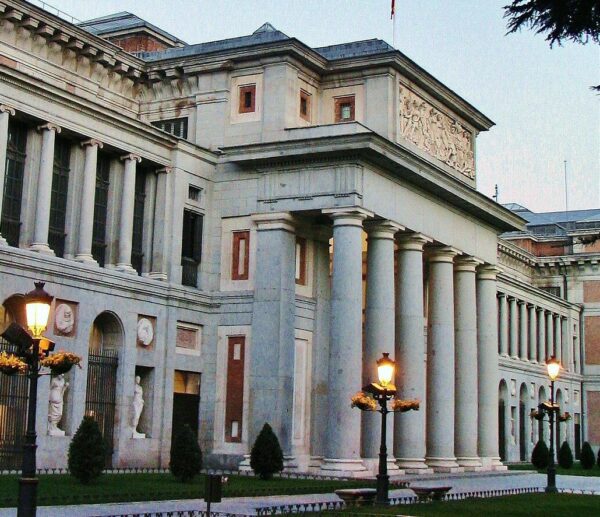
Likewise, the collection of the Prado Museum has also been enriched with numerous legacies and donations, and even with the occasional purchase of works such as, for example, the famous painting “The Countess of Chinchón” by Goya, in 2000.
It should be noted that the Buen Retiro House, dependent on Prado Museum, initially housed the Guernica de Picasso after its arrival in Spain, and before going to its final location in the aforementioned Reina Sofía museum.
What paintings are essential to see in the Prado Museum
Next I am going to give you a series of Tips for your visit to the Prado Museum and in this way I can see essential works:
To begin with, if instead of visiting on your own you prefer to visit the museum with the help of an expert, here you have information about guided tours of the Prado museum.
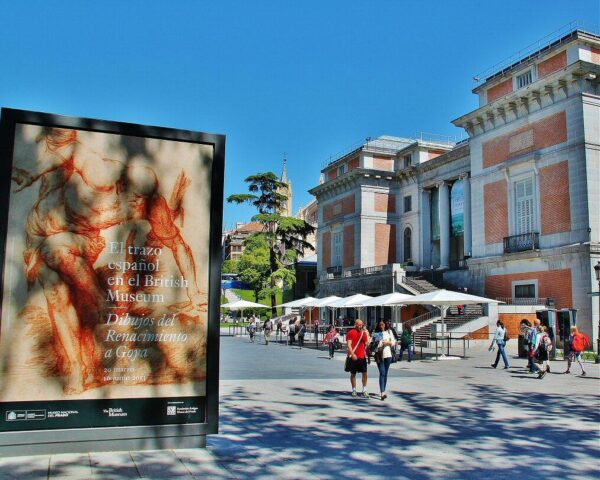
Once you have purchased the ticket at the Goya Gate lockers, In the Loyalty Square, and opposite the Hotel Ritz, climb the stairs next to them to enter the museum at the top of this access.
ORGANIZE your TRIP
- Don't forget your TRAVEL INSURANCE with a 5% discount
- Book the HOTEL for your trip
- RENT a CAR for your trip
- The best TOURS and EXCURSIONS in Spanish
- NO-LINE TICKETS for museums and monuments
- Best FREE TOURS around the world
- Book your TRANSFER from the airport
- eSIM card with INTERNET at the best price
Although the main service facilities for visitors (cafeteria, shop...) are located at the entrance on the Jerónimos Gate, In the Goya Gate You will have basic services such as left luggage or audio guides.
Most important rooms of the Prado Museum
When you enter, don't forget to ask for the brochure with the Plan of the Prado Museum, which will be an essential help to move through the different rooms, while also informing you where the main paintings in the Madrid art gallery are located.
When you access through the Goya's High Gate, you arrive directly at the main and most majestic gallery of the Prado Museum, with its large arch-shaped ceiling that, thanks to its skylights, gives great light to the room.
In this great gallery, as you enter you can see the great painting of Titian “Emperor Charles V on horseback in Mühlberg”, and a little further on, one of the masterpieces of Jose de Ribera, “Jacob's Dream” (room 26), and "Immaculate" (room 29), Murillo.

The Three Graces by Rubens in the Prado Museum
If you enter through the first door on the left of this large gallery, you immediately arrive at the 9 room, where you find the famous painting “The Three Graces” de Rubens, and in 9B, “The Adoration of the Kings".
In the nearby room 7 you have the best exponent of Rembrandt, "Sagebrush".
And it is in this area, between rooms 8A to 10 A, where you can enjoy the great works of El Greek, among which stand “The Knight with his hand on his chest” o "The Trinity".
Masterpieces by Velázquez and Goya in the Prado Museum
And immediately you arrive at the area dedicated to painter Velázquez, where in the great 12 room and in successive sections, up to 16, you will be able to see their great masterpieces.
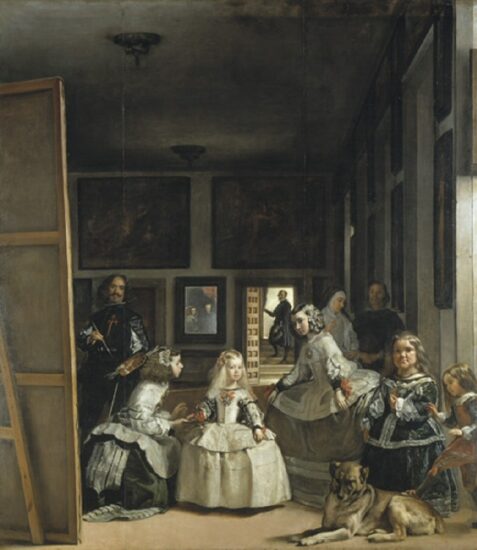
At the back of the large main gallery on floor 1 you have a group of the Goya's masterpiecesas “The Family of Charles IV” or “Majas”.
To be able to see the rest of Goya's paintings, you must go up to floor 2, where they are distributed in their small rooms, and, later, go down to floor 0 of the Prado Museum, where you will find its black painting.
As you move through a labyrinth of rooms on this floor, you find the majestic painting “Isabel the Catholic dictating her will” de Rosales (room 61B) and a sample of the painting of Sorolla, "Children on the beach" (room 60A).
Flemish and Italian paintings in the Prado Museum
After crossing the services area for visitors to the Velazquez Gate, you arrive at another group of rooms where large Masterpieces of Flemish and Italian painting from the Prado Museum.
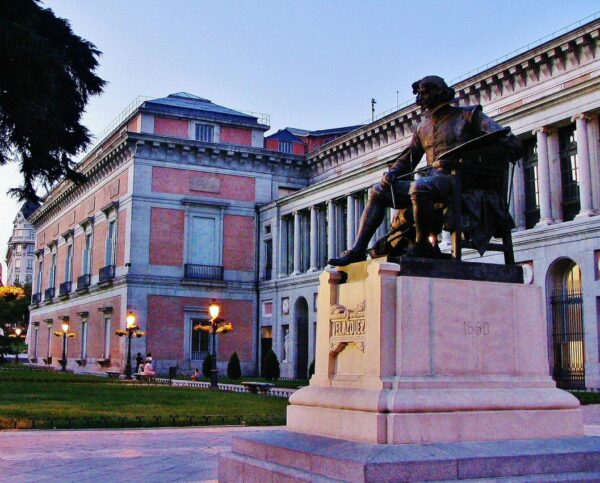
In your visit to the Prado Museum It is essential that you enjoy the famous paintings of El Bosco, “The Garden of Delights” y “The Table of Deadly Sins” (room 56A). In the same room you have “The Triumph of Death”, Brueghel.
This area is also on the 0th floor, in the large 49 room, you have two outstanding works by Rafael, “The Cardinal” y “The Virgin of the Fish”.
And in this same room you can also see “The Annunciation” de Fra Angelico, and “The Transit of the Virgin” de Mantegna. And in room 55B, the "Self-portrait" de Dürer.
Finally, you can now leaving the Prado Museum awarded by the Jerónimos Gate, located in the new annex of the building The Jeronimos, and where you will find, among other services, the cafeteria and the museum store.
This way, you will be sure that you have finished the visit without having missed the main works of the Prado.


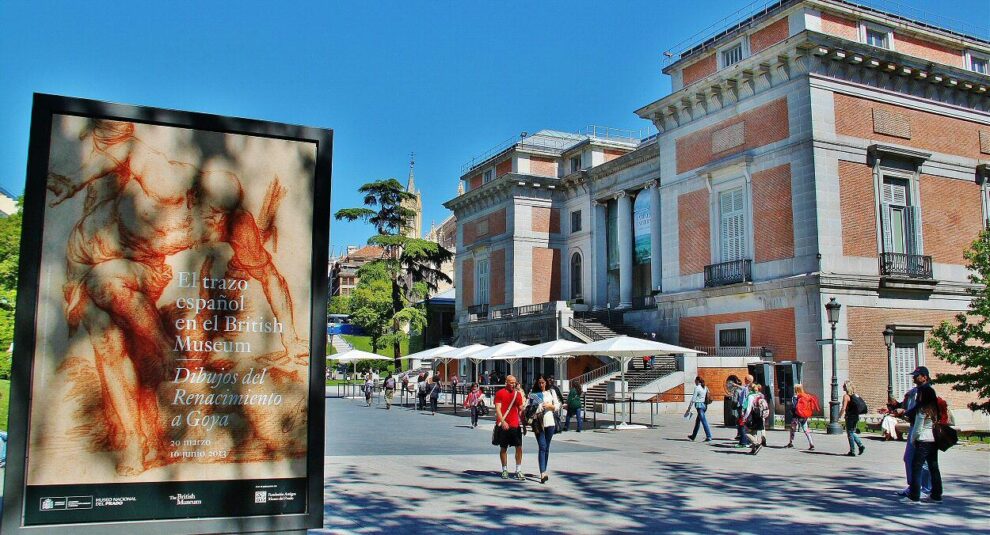
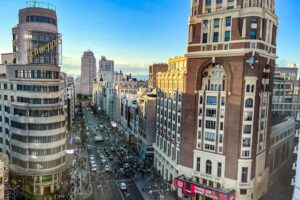
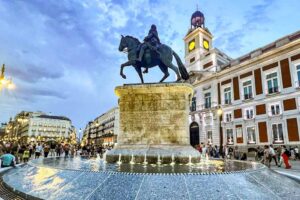
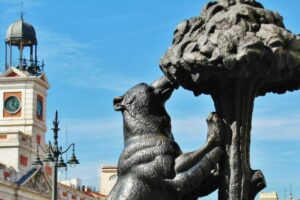











Congratulations to the website for the quality of its information.
You have done the “dirty work” of planning the visit for me.
Perfect to not miss the best of Madrid. Thank you!
Visiting Madrid in 4 days is an impossible mission, but it is more difficult to visit the Prado in one morning, so we went to the essentials: Goya, Velazquez, Murillo... and my children really loved seeing the paintings that appear in the books of text. Bosch didn't want to miss it. We took advantage of another day to visit the center of Madrid, and another the zoo, since we were with children, and on our return we stopped to eat and have tapas in Alcala de Henares where it is very cheap, and to walk along Calle Mayor which takes you back to its Medieval past . A very full long weekend.
Madrid+Photos+City+Art…. I don't think you can ask for more, but there is. There are many tours out there but for photography lovers who do not want to give up any of the good things about Madrid while visiting the city, the best is undoubtedly here. There are tastes for everything but, for me, an exclusive and unbeatable experience.
Thank you for your comment, Lorena, I very much agree 🙂
One of the best museums in the world is undoubtedly the Prado in Madrid. I had the opportunity to visit it, the heritage that is protected there is impressive. I am a potisina from Bolivia and I work in the museum of the Mint of Potosi Bolivia. I am in the museum area, that is why for me visiting museums is the best. Congratulations to all those who work at the Prado Museum